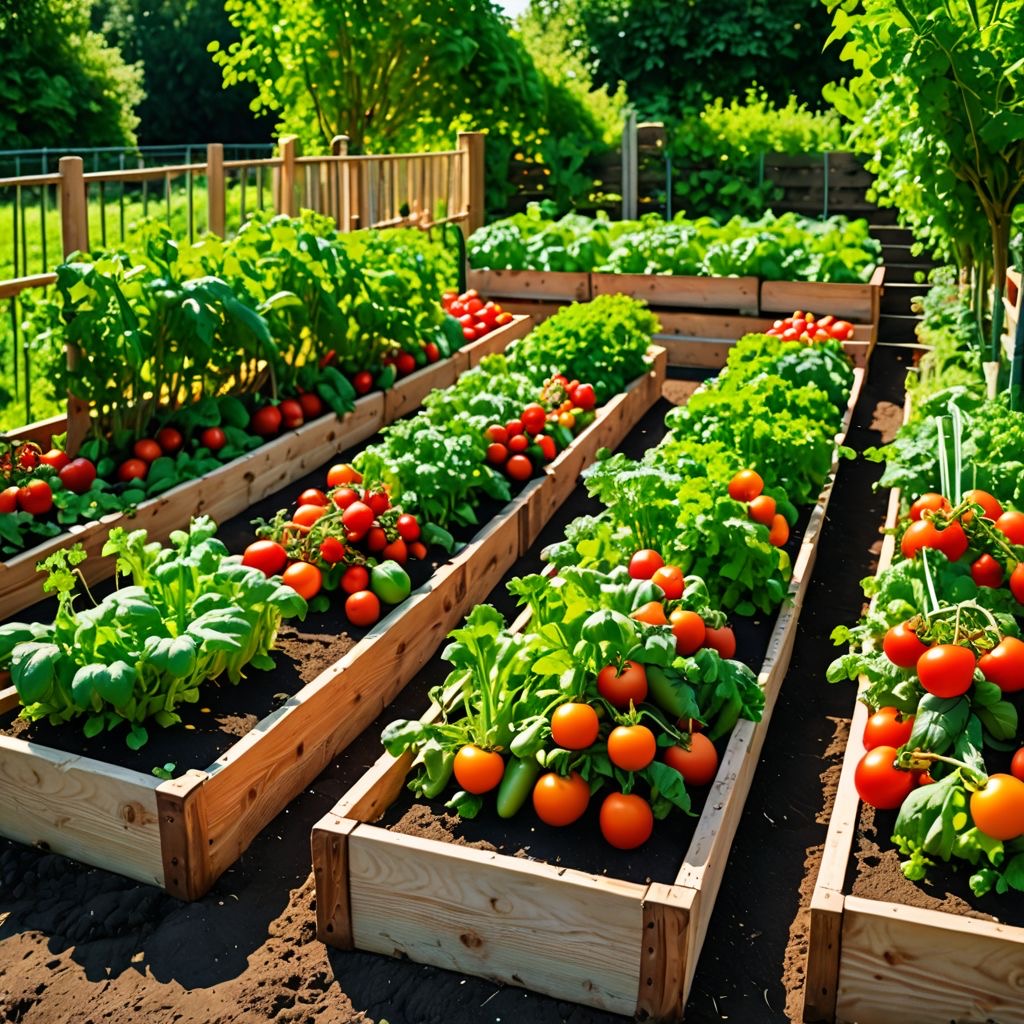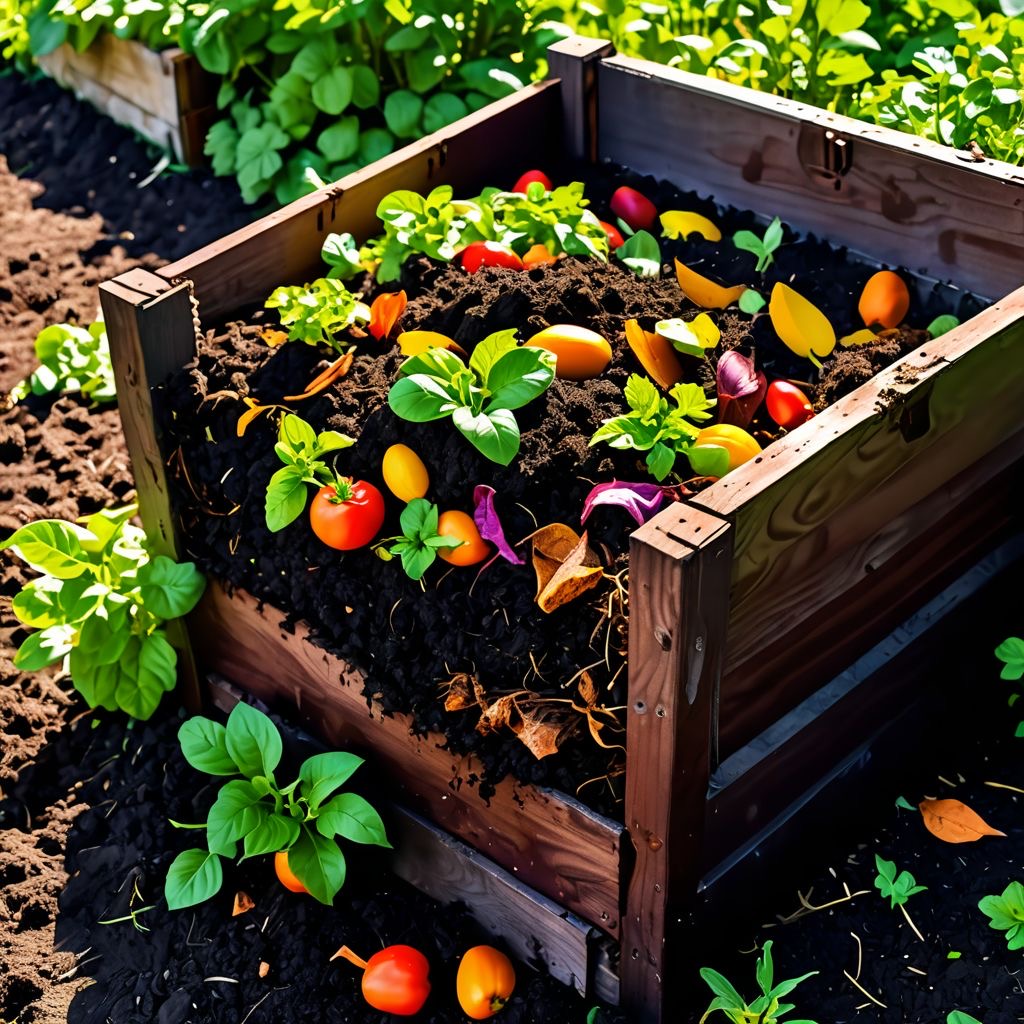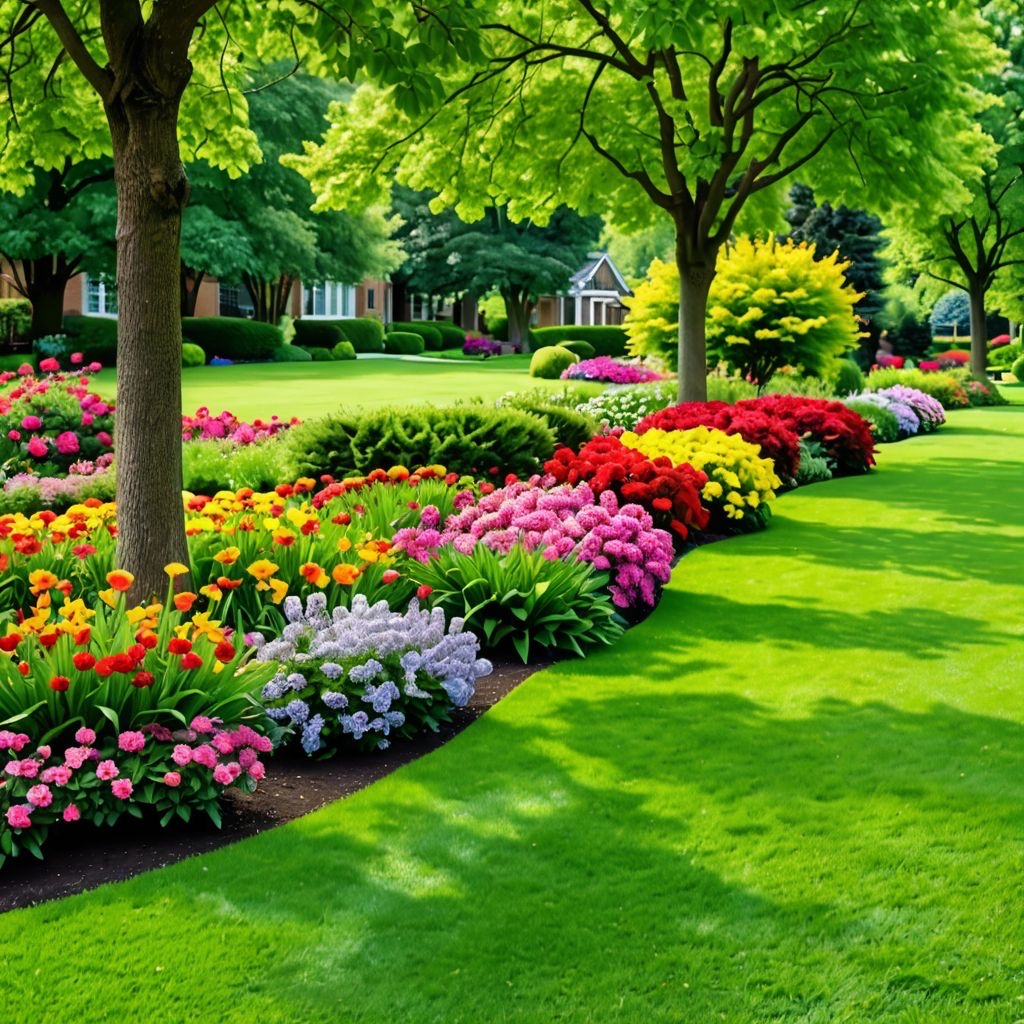
The Ultimate Guide to Winnipeg Garden Bed Options: Raised vs. Traditional
Table of Contents:
1. Introduction
2. Understanding Garden Beds
- 2.1 The Basics of a Garden Bed
- 2.2 Importance of Choosing the Right Type
3. Traditional Garden Beds: The Classic Choice
- 3.1 Definition and Characteristics
- 3.2 Advantages of Traditional Beds
- 3.3 Disadvantages of Traditional Beds
4. Raised Garden Beds: The Modern Approach
- 4.1 Definition and Characteristics
- 4.2 Benefits of Raised Beds
- 4.3 Downsides of Raised Beds
5. Soil Matters: Choosing the Right Medium
- 5.1 Soil Composition for Each Type
- 5.2 Importance of Topsoil
- 5.3 The Role of Compost
6. Plant Selection: What to Grow in Your Beds
- 6.1 Choosing the Right Plants for Traditional Beds
- 6.2 Ideal Plants for Raised Beds
- 6.3 Perennials vs. Annuals: Here’s the Lowdown
7. Design Differences: How Each Bed Affects Your Landscape
- 7.1 Traditional Garden Aesthetics
- 7.2 The Visual Appeal of Raised Beds
8. Maintenance and Care: What’s Needed for Garden Bed Success
- 8.1 Yard Maintenance Winnipeg: A Year-Round Commitment
- 8.2 Routine Care for Traditional and Raised Beds
9. Cost Considerations: Are Raised Beds Worth the Investment?
- 9.1 Initial Costs vs. Long-Term Value
- 9.2 Affordable Landscaping Winnipeg Options
10. Conclusion
Introduction:
So, you've decided to dive into the vast, sometimes muddy world of gardening—or you've simply come across this guide while contemplating your future as the next champion rose garden or flower garden award winner. Whether you’re new to gardening or a seasoned pro, one major decision you'll face is selecting between raised garden beds and traditional garden beds. Both have their merits, yet it's important to evaluate which option aligns best with your needs, budget, and of course, your vision for that perfect home garden.
Let’s face it, life can be chaotic, and after a long workweek, the last thing you want to be doing is wrestling with weeds in the dirt. This is where landscape design comes into play. In this guide, we’ll attempt to dissect the ins and outs of both raised and traditional beds.
Our goal will be to cover all aspects to help you make an informed decision. By the end of this guide, you’ll not only know which style of bed suits your garden design dreams but also feel empowered to take action with practical tips and wisdom shared straight from those who earn their stripes in the soil—both commercial and residential landscapers. Let’s dig in, shall we? (And by "dig in," I mean metaphorically of course; there's enough actual digging involved here already!).
Contact us today for your free estimate.
Understanding Garden Beds:
2.1 The Basics of a Garden Bed
Before delving into the specifics of raised versus traditional garden beds, let’s clarify what we mean by “garden beds”. A garden bed is simply an area of soil that has been enhanced and prepared for the purpose of growing plants. These beds can be built up (raised), or they can sit at ground level (traditional). Think of a garden bed as your plants' cozy little nook where they can spread their roots, soak up the sun, and sip on some fresh rainwater.
2.2 Importance of Choosing the Right Type
Now, you might be wondering, "Why does the type of garden bed even matter?" The truth is, selecting the right bed can dramatically influence several factors: plant health, maintenance requirements, overall aesthetics of your garden design Winnipeg style, and even how you feel about getting out there and working on your landscaping project. Choosing the right bed can mean the difference between a bountiful harvest and wondering why your veggies are staging a protest.
Traditional Garden Beds: The Classic Choice:

3.1 Definition and Characteristics
Traditional garden beds can be as simple as a patch of tilled soil in your yard or a well-defined plot with neat edges. They are usually built directly on the ground and may involve some soil amendment to enrich the existing earth. These beds embody classic horticultural techniques that have thrived for centuries, proving that sometimes old-school tactics are worth their weight in compost.
3.2 Advantages of Traditional Beds
Let’s talk perks! First off, traditional gardens are generally cheaper to establish. Just grab a shovel, throw in some seeds, and voilà—you’re officially a gardener. Also, traditional beds can be larger than raised beds, allowing for sprawling designs that may suit your flower bed design aspirations. Another advantage is the natural environment they provide—as your plants' roots can stretch down into the native soil, giving them plenty of room to grow.
3.3 Disadvantages of Traditional Beds
But it’s not all sunshine and rainbows. Traditional garden beds can require more labor, especially when it comes to weeding, and poor soil conditions may necessitate extensive amendment to create the perfect growing environment. Additionally, they tend to be more susceptible to erosion and soil compaction over time, which can hinder your plants' growth.
Contact us today for your free estimate.
Raised Garden Beds: The Modern Approach:
4.1 Definition and Characteristics
Picture this: a structure built above the natural soil line, encased in wood, stone, or even metal—conveniently filled with a sumptuous mix of topsoil, compost, and other amendments. Welcome to the world of raised garden beds! They’re gaining popularity faster than you can say “let’s grow some vegetables!” and for good reason.
4.2 Benefits of Raised Beds:
To toss a sprinkle of fun facts in your direction, raised beds do wonders for soil drainage. No more puddles in the garden! Also, they allow for a more ergonomic gardening experience, meaning relief from back aches from bending over to dig in the dirt. Plus, with raised beds, you have more control over the soil conditions—you can curate the perfect planting mix for your home garden design and provide your plants with the ultimate spa treatment.
curating the perfect planting mix

4.3 Downsides of Raised Beds
However, let’s not get too carried away with the glorious life of raised beds! There are a few downsides. Initial costs can skyrocket depending on the materials you choose, be it rot-resistant wood or chic metals. And if you’re really passionate about this whole gardening gig, you might find yourself building multiple beds, which adds to the costs. Moreover, once those beds are situated, you’re somewhat more limited in terms of landscaping ideas as compared to traditional gardens.
Soil Matters: Choosing the Right Medium:
5.1 Soil Composition for Each Type
When embarking on your gardening journey, it’s crucial not to overlook the heart and soul of your garden—the soil! Whether choosing traditional or raised beds, soil quality plays a significant role in your plants' health.
Contact us today for your free estimate.
5.2 Importance of Topsoil
For traditional beds, you’ll want to ensure you’re working with quality top soil, rich in nutrients and guaranteed drainage. You can often purchase bulk soil that gives your plants the life they crave. On the flip side, with raised beds, you can get a little fancy and mix your top soil with compost and other organic matter, enhancing the soil structure and fertility from day one.
5.3 The Role of Compost

Speaking of compost, it’s like the magic fairy dust of the gardening world! Not only does it help to improve soil structure and moisture retention; it also introduces beneficial microorganisms that can assist in plant growth. If you’re new to gardening, consider starting with a homemade compost bin—it’s kind of like having a little pet in the backyard—but instead of feeding it kibble, you feed it kitchen scraps.

Plant Selection: What to Grow in Your Beds:
6.1 Choosing the Right Plants for Traditional Beds
The beauty of traditional garden beds is their versatility. You can go the perennial route, planting hardy blooms and crops that return year after year, or you could get carried away with a multitude of annuals, filling your beds with vibrant colors until frost hits. Think tomatoes, cucumbers, or flowers galore!

6.2 Ideal Plants for Raised Beds
Raised beds, on the other hand, thrive best with more strategic planting. Due to their defined space and potential for richer soil, you might want to focus on veggies that appreciate the extra care, such as broccoli or peppers. Plus, if you’re one for aesthetic appeal, consider including herbs or flowers within your beds for a burst of color and delightful fragrances.
6.3 Perennials vs. Annuals: Here’s the Lowdown
Here’s where choices get a bit tricky—perennials tend to offer long-lasting blooms and won’t require replanting year after year. However, they may take some time to establish. Annuals, lovely as they may be, need to be seeded every year, resulting in a recurring expense. Ultimately, it’s up to your personal preferences and garden goals.
Contact us today for your free estimate.
Design Differences: How Each Bed Affects Your Landscape:
7.1 Traditional Garden Aesthetics
As beautiful as traditional gardens can be, they often require a little more creativity and maintenance when it comes to aesthetic design. They lend themselves nicely to sprawling landscapes, complementary to various plants, but maintaining a harmonious look might require more effort.
7.2 The Visual Appeal of Raised Beds
Conversely, raised beds can add a modern flair to your landscaping projects! Their uniform heights can create visually striking lines in your landscape architecture. Stack a few with varying heights, and you've got yourself a chic garden display worthy of a magazine cover—who knew gardening could double as home decor?

Maintenance and Care: What’s Needed for Garden Bed Success:
8.1 Yard Maintenance Winnipeg: A Season-Round Commitment
When it comes to yard maintenance Winnipeg, prioritize establishing a routine to keep your garden beds pristine and thriving. Between weeding, watering, and fertilizing, staying on top of your garden game is crucial for success. For traditional beds, be ready to spend a bit more time on hands and knees, while raised beds may require slightly less labor due to better soil conditions and fewer weeds.
8.2 Routine Care for Traditional and Raised Beds
In every garden, the work’s never done! Ensure your plants receive adequate water, sunlight, and nutrients. Keep your plants pruned and look out for pests; after all, nobody wants an unexpected infestation ruining their hard work. Also, don’t forget to factor in seasonal changes—mulch for winter protection or shade cloth during the sweltering summer days are all amenities to consider.
Nobody wants unexpected pests

Cost Considerations: Are Raised Beds Worth the Investment:
9.1 Initial Costs vs. Long-Term Value
Cost is sometimes the heavy hand of fate that rolls out in ways we don’t expect. Traditional beds, on the surface, might seem the less expensive option—but if you’re frequently amending soil and battling weeds, those costs can build up over time. Raised beds may have higher initial expenses but can potentially lead to reduced long-term maintenance. With proper care, they can yield bountiful harvests!
9.2 Affordable Landscaping Winnipeg Options

No matter which route you choose, consider tapping into one of the best landscaping companies Winnipeg has to offer to assist with planning and setup if necessary. Searching Quality landscaping contractors near me can provide multiple insights and good options that fit your budget while delivering fantastic results. Plus, they can save you a little of that sweat equity!
Contact us today for your free estimate.
Conclusion:
So there you have it! After weighing the pros and cons of raised vs. traditional garden beds, the ultimate decision falls into your hands. Both offer unique benefits and challenges, and your choice largely depends on personal preferences, available space, budget, and your gardening aspirations. Whether it’s the old-school reliability of traditional beds or the modern elegance of raised options, your home garden can flourish in either setup.
And remember, gardening is as much about the journey as it is about the blooms that will eventually grace your plot or the delicious veggies you’ll pull from the soil. Join local gardening communities, seek out landscaping contractors Winnipeg for advice, or talk to your neighbor about their garden for inspiration—you never know what connections or wisdom are out there waiting for you!
Now, go forth and plant those gardens, embrace the messiness, enjoy the fruits (and veggies) of your labor, and most importantly—have fun with it! Gardening is not just about the endgame; it’s about the paths you take and the joys you discover along the way.

